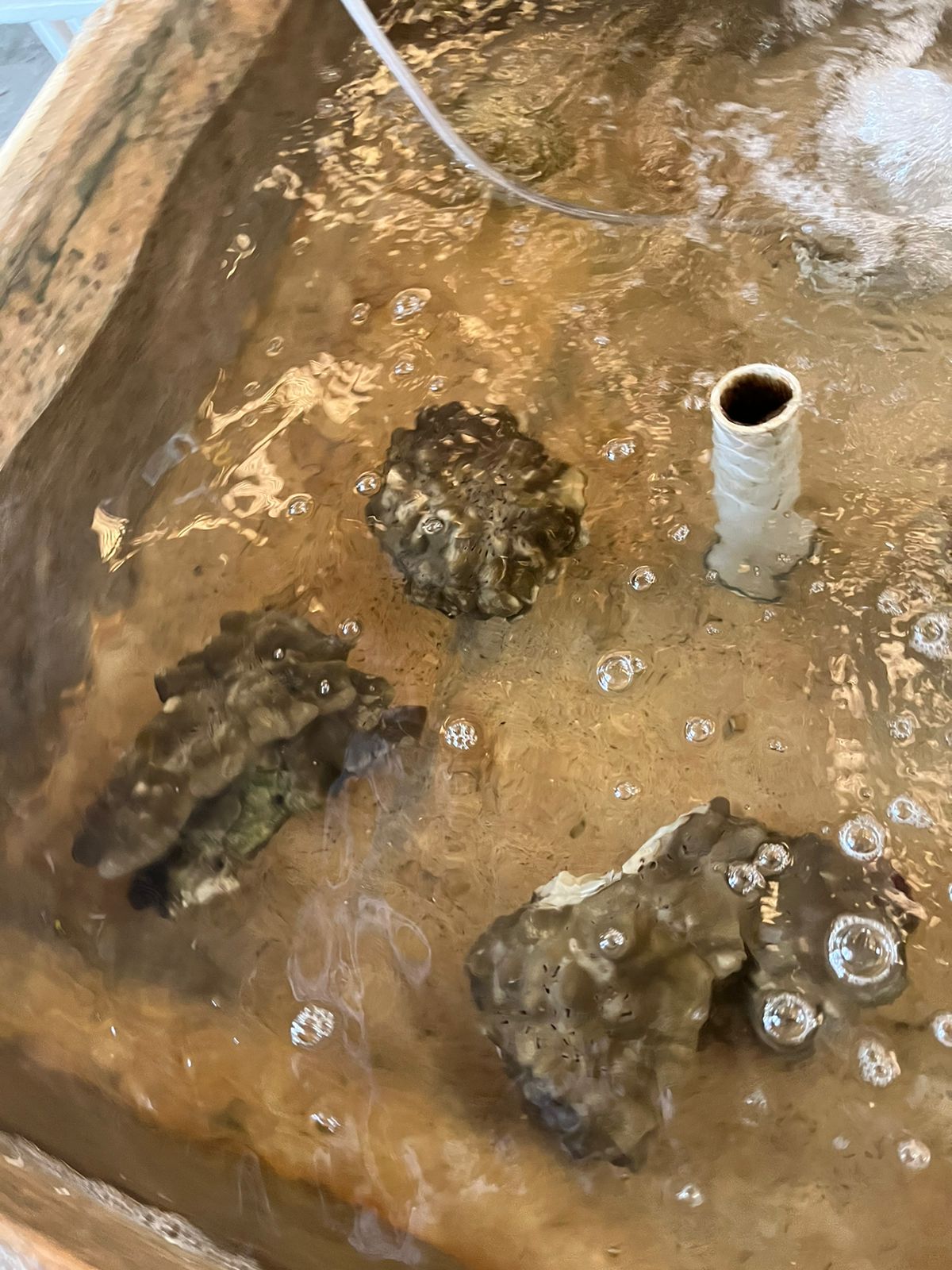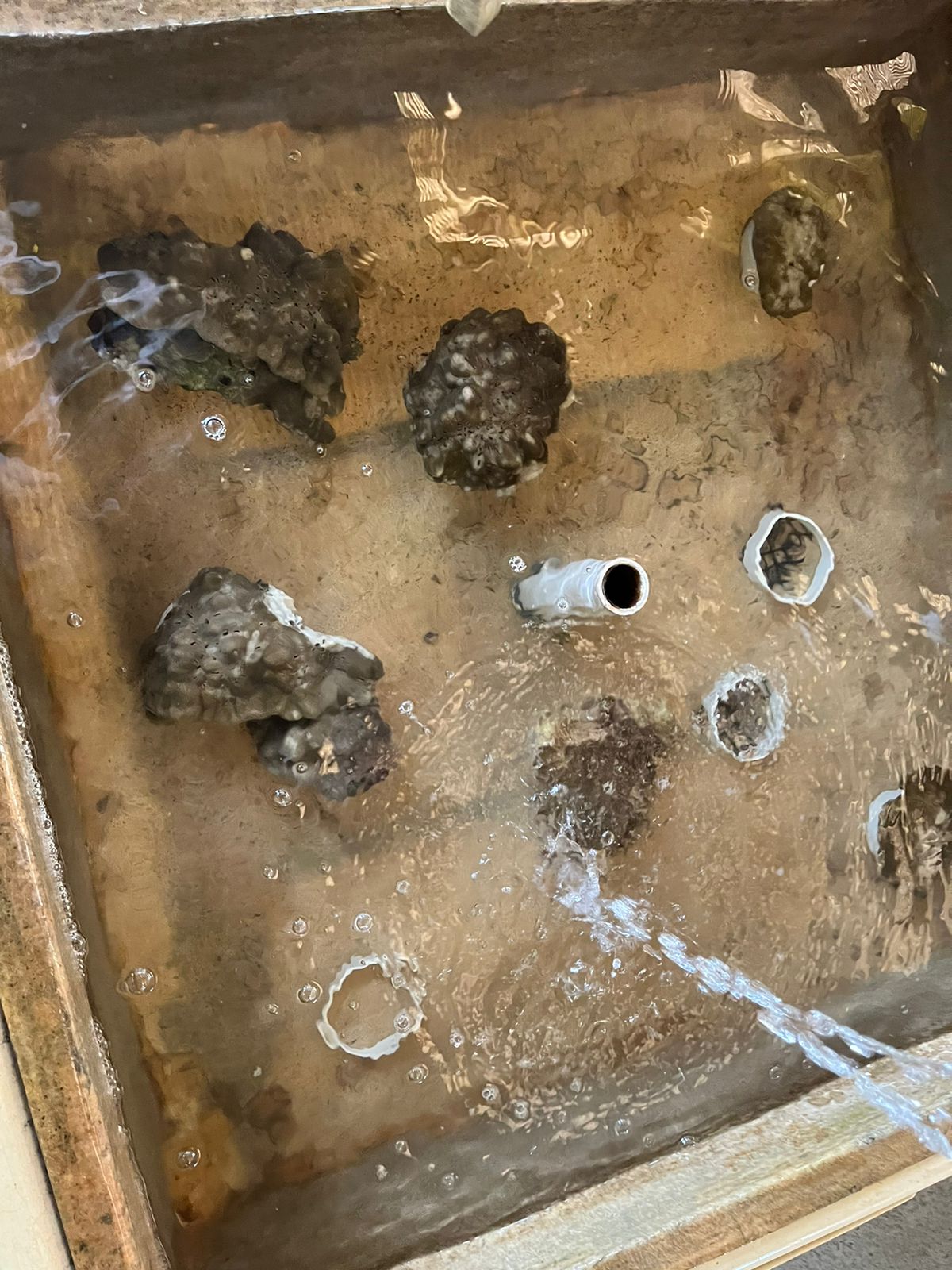Pacific corals and SCTLD
Experimental notebook to test susceptibility of Pacific corals to SCTLD
Coral collection
Colonies were collected by Juan Mate and collaborators and brought to the STRI in NAOS
- Porites lobata: 6 colonies collected on February 26, 2024



- Pocillopora: 10 colonies collected on March 1, 2024
- Pavona clavus: 7 colonies collected on March 7, 2024



Pocillopora not looking so good on March 21. New colonies will be collected on March 25th.
Permits
Export:
- CITES permits requested by Juan Mate
Import:
-
Make sure the CITES export permit from Panama is validated before the shipment leaves the country.
-
Contacted fwsole_miami@fws.gov to make them aware of the samples coming. Instructions:
- File a 3-177 Declaration prior to the import
- As part of the declaration, upload documents (you will have to combine them in one PDF) including:
- scans of the CITES permits
- specimen list (including scientific names, quantities, and description (live)
- scan of the air waybill or plane ticket (is this shipment being hand carried?)
- a short description of the research
- If landing on a weekday (M-F 8:00am to 4:00pm) Customs may call us to ask if we are aware of the shipment as the person is carrying the specimens through.
- If the shipment is outside of normal working hours, we may have to contact Customs to let them know to expect the shipment and the shipment will be assigned to the overtime inspector.
- The original permits will need to be submitted to our office and then the declaration will be cleared in the computer. You may either bring them into the office or send them through a reliable service such as FedEx with a tracking number.
- The management authority or Customs will sign off on the bottom portion of the permit and validate the number of animals being exported.
-
At least 48 hours in advance, please email us again to remind us of the shipment as we require a 48-Hour Notice of any live or perishable imports.
Travel
- Arriving in Panama City on March 26th (Ana and Taylor)
- Packing colonies in two coolers with paper towels, bubble wrap and some water.
- Packing list - Panama
PassportNOAA/UM IDsCoolersZiplock bagsBubble wrapPaper towelsCopy of permitsZip tiesDuct tapeFlightsHotel reservation
-
Arrived at STRI at 8:20. Prepared packing materials, printed labels and attached them to coolers.
- Started packing colonies at 10:30 - finished at 11:30


-
CITES permits signed in Terminal 1 of the airport at the arrivals floor.
-
Landed at 7PM, but took a while to get though customs and get the corals to ERL.
-
All corals in the water around 9PM. Tanks were set to 25C
-
Pictures:
Recovery and Fragging
- Pictures: Colonies at ERL
- 2024-03-28: Colony P.cla 855 and 893 with dead spots (cold patches in transport)
- 2024-03-29: A section of colony P.Cla 850, about 1” in diameter has started to slough, likely due to cold exposure in transit. The colony was moved to a separate vessel and bathed to remove dead tissue before being returned to the raceway (AB)
- 2024-04-01
- Colony P.cla 855 was fragged since it continued to lose tissue on the margins of the cold spot. Fragments moved to quarantine in the glass tanks (Ben and Anthony)
- Colony Pocillopora 899 has TL in three branches. Those branches were removed (AB)
- 2024-04-02: Colonies P.cla 850 and 893 were moved to a glass tank each and light was reduced from 175 PAR to 125 (Anthony). One of the fragments of P.Cla 855 has lost color and declined in health.
- 2024-04-04
- Colonies P.cla 850 and 893 moved into the same glass tank.
- Colony Pocillopora 899 has started to slough tissue from deep within the colony. The colony was fragmented and the diseased skeleton was removed.
- Colony Pocillopora 853 has started to lose tissue on four branches and has developed a brown mucus layer around the dead tissue - a dead crab was inside the colony. The colony was fragmented to remove the diseased skeleton (AB)
- 2024-04-06 and 07: ~6 fragments from Pocillopora XXX died over the weekend. Removed from tanks (AP).
- 2024-04-09: P.cla colonies fragged in big pieces with the tile saw (BC and AB)